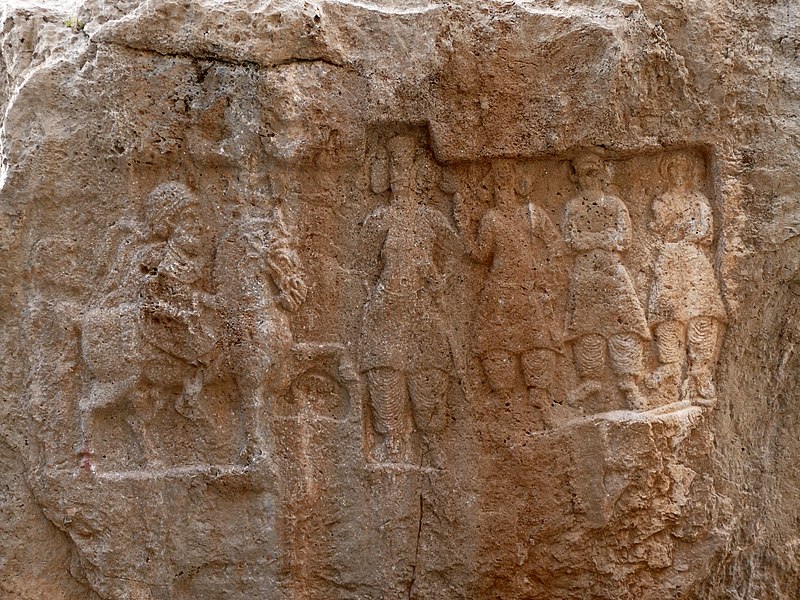Fájl:Xong-e Ashdar Parthian relief.jpg
Megjelenés

Az előnézet mérete: 800 × 600 képpont További felbontások: 320 × 240 képpont | 640 × 480 képpont | 1 024 × 768 képpont | 1 280 × 960 képpont | 2 560 × 1 920 képpont | 3 648 × 2 736 képpont.
Eredeti fájl (3 648 × 2 736 képpont, fájlméret: 2,3 MB, MIME-típus: image/jpeg)
Fájltörténet
Kattints egy időpontra, hogy a fájl akkori állapotát láthasd.
| Dátum/idő | Bélyegkép | Felbontás | Feltöltő | Megjegyzés | |
|---|---|---|---|---|---|
| aktuális | 2008. május 6., 15:14 |  | 3 648 × 2 736 (2,3 MB) | Pentocelo~commonswiki | == Description == {{Information |Description= Parthian relief of Mithridatus Ist of Parthia at Xong-e Ashdar. City of Izeh, Khouzestan province, Iran |Source= Own work |Date= April 2008 |Author= Pentocelo |Permission= |other_versions= |
Fájlhasználat
Az alábbi lap használja ezt a fájlt:
Globális fájlhasználat
A következő wikik használják ezt a fájlt:
- Használata itt: azb.wikipedia.org
- Használata itt: ca.wikipedia.org
- Használata itt: de.wikipedia.org
- Használata itt: en.wikipedia.org
- Használata itt: es.wikipedia.org
- Használata itt: fa.wikipedia.org
- Használata itt: fi.wikipedia.org
- Használata itt: fr.wikipedia.org
- Használata itt: id.wikipedia.org
- Használata itt: it.wikipedia.org
- Használata itt: ja.wikipedia.org
- Használata itt: nl.wikipedia.org
- Használata itt: no.wikipedia.org
- Használata itt: pt.wikipedia.org
- Használata itt: ro.wikipedia.org
- Használata itt: ru.wikipedia.org
- Használata itt: sh.wikipedia.org
- Használata itt: sl.wikipedia.org
- Használata itt: tr.wikipedia.org
- Használata itt: vi.wikipedia.org
- Használata itt: zh.wikipedia.org

